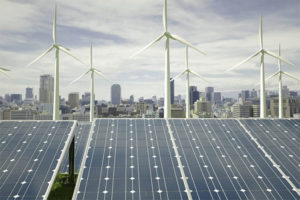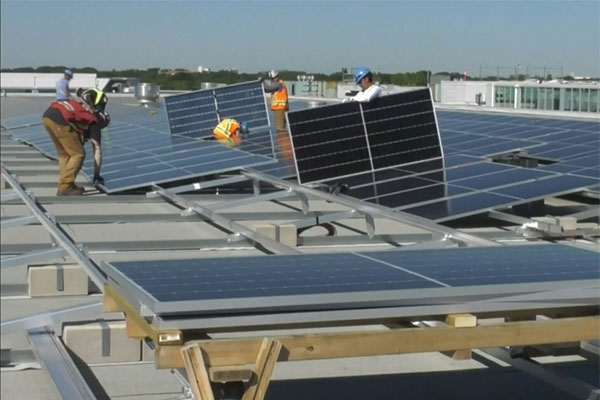The Canadian Federal government released it’s vision for transforming Canada’s electricity sector at a pace and scale, it says, to rival any nation-building project in the country’s history.
Delving into the complexities of this vision for a net-zero electricity grid by 2035, this article unpacks the newly released plan and its implications for the nation’s energy future. We’ve spent time summarizing a lengthy document associated with the announcement so that you don’t have to. The summary offers an insightful glimpse into how Canada plans to decarbonize sectors like transportation and buildings, all while creating jobs and ensuring affordable power.
Enjoy!
Canada is embarking on an ambitious journey to decarbonize its electricity systems and build a net-zero emitting grid by 2035.
The Clean Electricity Regulations (CER) play a critical role in this endeavor, paving the way for a future where clean, reliable, and affordable electricity becomes the backbone of a sustainable economy.

Renewable energy sources currently provide about 16% of Canada’s total primary energy supply. Wind and solar energy are the fastest growing sources of electricity in Canada.
Powering Canada Forward: A Visionary Roadmap
The federal government’s release of the CER’s vision document, “Powering Canada Forward,” marks a significant milestone in Canada’s commitment to a greener future.
This document lays out the principles and strategies necessary to achieve a net-zero grid that aligns with global efforts to reduce carbon emissions and climate change impacts.
A Net-Zero Grid: Why It Matters
The goal of achieving a net-zero grid goes beyond environmental stewardship.
It is an economic imperative that enables the decarbonization of other key sectors, including transportation and buildings, paving the way for comprehensive sustainability across Canada’s diverse landscape.
This monumental effort is not just about reducing emissions; it is about fostering innovation, creating employment opportunities, and providing reliable and affordable power to all Canadians.
Key elements of the Clean Electricity Regulations (CER)
1. Competitiveness in a Low-Carbon Economy:
A net-zero grid is essential for Canada to remain competitive in the burgeoning low-carbon global economy. By providing regulatory and policy certainty, the CER promotes investment and innovation in clean energy technologies and infrastructure.
2. Decarbonizing Multiple Sectors:
The regulations aren’t limited to the energy sector. By supporting the decarbonization of transportation, buildings, and other areas, they facilitate a holistic transition to a low-carbon society.
3. Employment and Economic Opportunities:
Emphasizing green technology and renewable energy sources, the CER aims to create employment opportunities across the nation, fostering a resilient economy that aligns with sustainability goals.
4. Affordability and Reliability:
The CER is built on the premise that clean energy should not come at the expense of accessibility or reliability. Ensuring competitively priced, dependable power for Canadians in all regions is a cornerstone of the regulations.
Global Commitments and Collaboration
Canada’s commitment to a net-zero grid by 2035 places it alongside other nations, such as the U.S., in a global pact to combat climate change. This commitment reflects an understanding that the transition to clean energy is not only a national priority but a global necessity.
The federal government is keen to foster dialogue with local, regional, provincial, and territorial governments, electricity system participants, Indigenous communities, and experts to chart individual and collaborative ways forward. These engagements will shape the draft regulations expected to be published shortly, making them responsive to diverse needs and opportunities across the country.

Honeywell and NRStor will develop and operate 300 megawatts (MW) of BTM battery energy storage systems (BESS) across the U.S. and Canada starting in early 2020. (PRNewsfoto/Honeywell)
Conclusion: A Sustainable Path Forward
The Clean Electricity Regulations are more than a set of rules; they represent Canada’s vision for a cleaner, more prosperous future. By aligning policy, innovation, investment, and collaboration, Canada is positioning itself as a leader in the global transition to sustainable energy.
The development of the CER is a monumental step in Canada’s path towards decarbonization, reflecting a commitment to not only meeting but exceeding international climate goals. It is a strategic move that ensures Canada’s continued competitiveness and prosperity in a world shifting towards sustainable energy solutions.
The CER’s focus on affordability, reliability, job creation, and environmental stewardship reflects a balanced approach to sustainable development. It acknowledges the complexities of the energy landscape and provides a roadmap that respects the unique circumstances and opportunities emerging in different parts of the country.
As Canada continues to work on building a thriving, sustainable net-zero future, the Clean Electricity Regulations will undoubtedly stand as a pivotal framework, guiding the nation’s efforts in the race to reduce carbon emissions, create economic opportunities, and protect the planet for future generations.
The release of “Powering Canada Forward” signifies a clear intention and a well-defined path. Now, the nation must rally together to make this vision a reality.











Comments